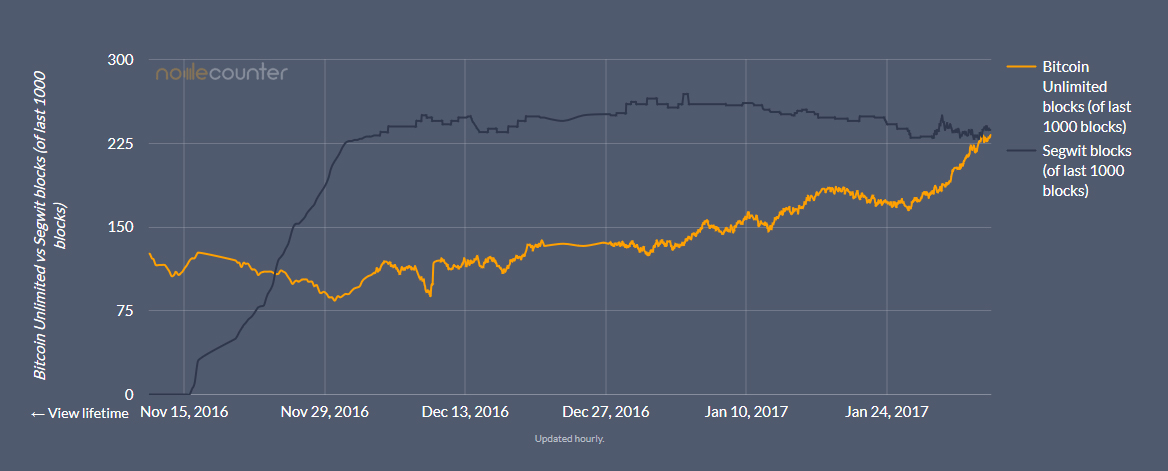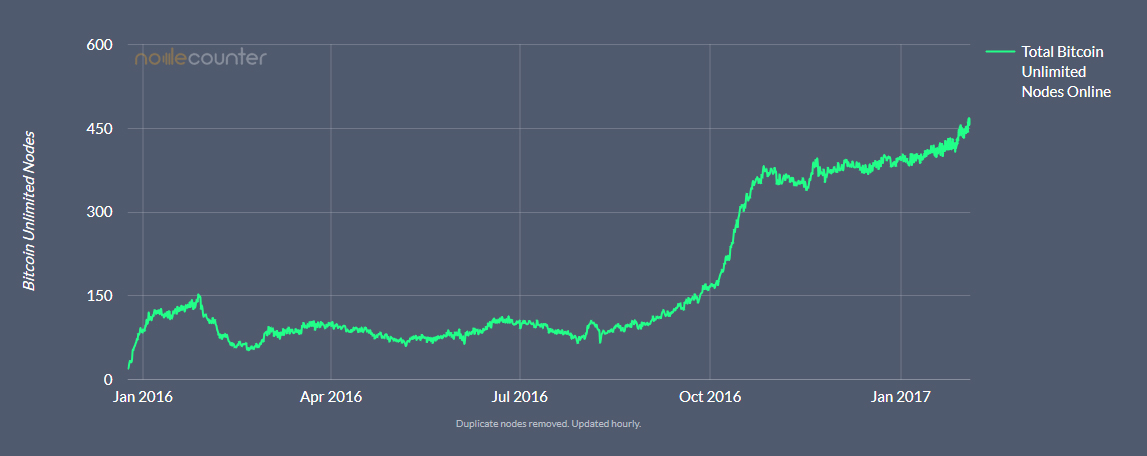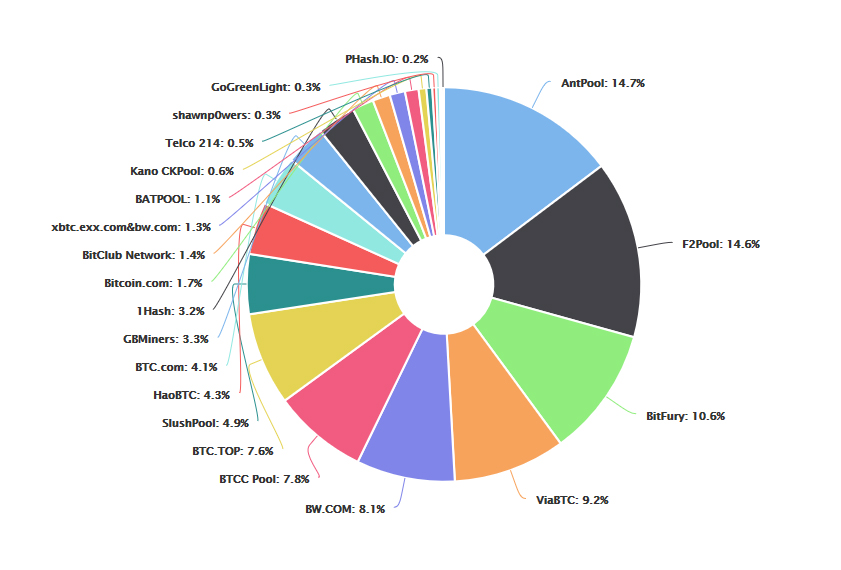Bitcoin Market Needs Big Blocks, Says Founder of BTC.TOP Mining Pool

Jiang Zhuoer, a former employee at China Mobile in Shanghai, the world’s largest mobile phone operator, where he led a 13-men team working on Data Warehouse and Big Data before establishing BTC.TOP, a new bitcoin mining pool that has suddenly shot to around 8% of the network’s hashrate, tells CCN.com in an interview:
“The market needs big blocks. If Core doesn’t want to (or can’t) give it, the market will take it by itself. No one can go against the market, unless he can show more money.”
Zhuoer, who speaks in broken English, therefore his quotes have only cosmetically been modified to make them grammatically sound, tells CCN.com that he learned “we can’t get big blocks from Core” in October 2015 at a HaoBTC party:
“I know big blocks are very important for bitcoin, but in October 2015 I only had thousands of bitcoins, but no btc hashrate or pool. To protect my btc, I begun to buy ASIC miners, get into the btc mining industry, and created BTC.TOP in 2017.”
He says that BTC.TOP is currently a private pool with the hashrate belonging to big miners who support Bitcoin Unlimited, a new grassroots client that continues the transaction capacity increase method bitcoin used for much of its existence. That is, without any centralized direction, miners somewhat spontaneously increased the block limit from 250kb to 500kb to 750kb and then finally to 1MB. With Bitcoin Unlimited, they can now increase it in roughly the same manner to 2MB or 4MB in line with demand as well as the progress of technology.

Some have speculated BTC.TOP’s hashrate comes primarily from Bitmain, but Zhuoer states that none of the hashrate belongs to Bitmain: “Jihan Wu keeps his hashrate in antpool & btc.com” – he says, before adding:
“China has many big miners. They don’t know what happen and what is BU before I contacted them one by one, but they all support big blocks once they understand what we are arguing about. They are the silent majority.”
BU recently had a bug which unintentionally created a bigger than 1MB block due to some miscalculations. Shortly after, BTC.TOP mined a segwit block. “Just a mistake” – he says. “The pool gets block head but not the full block. To prevent wasted hashrate during the time, it will SPV mine and in SPV mine, the pool does not use BU to create blocks.”
That block was followed by many more BU blocks, so I wondered if he mines them through a Bitcoin Core client or through the Bitcoin Unlimited client. The pool “actually mines using the Bitcoin Unlimited client.” – he says. I wondered if the BU bug had affected his opinion:
“I have worked for 1 year to protect my BTC,” – he says. “My flight mileage for this year is more than the past 10 years combined. You know what that means.”
Those flights do not include “much” discussion with Bitcoin Core developers or Blockstream employees. “I don’t have hope for Core,” – Zhuoer says. “Some of Core insists on small blocks (1M or 1M+), some even want 0.3M.”
“We know that Core can only make a decision if they are in full agreement, but some of Core is against big blocks, so Core will never make a decision to update to big blocks.”
Luke-Jr stunned the bitcoin community recently when he “recommended” a 70% reduction of the blocksize to 300KB or an increase of the current transaction capacity in seven years. Zhuoer’s view of that proposal was to state:
“When you think based on big data, you see man just like man sees ants. The market needs big blocks, no one can go against the market. Who goes against the market will be destroyed, unless he can show more money.”
Luke-Jr has stated that his recommendation technically meets the requirements of the closed-door Hong Kong agreement which binds the signing miners to only run Bitcoin Core “for the foreseeable future,” based on a promise that segwit plus a 2MB maxblocksize hardfork increase will be merged in a Bitcoin Core client release. The latter hasn’t happened, with Gregory Maxwell, Blockstream’s CTO, publicly stating today “I absolutely do not support” a 2MB plus segwit hardfork.
I wondered what Zhuoer thinks of the Hong Kong agreement. His reply was short: “The last compromise of the market to Core.”
Bitcoin Unlimited Gaining Momentum
This debate has now been going on for almost two years, making it one of the longest technical debate ever, but Bitcoin Unlimited is gaining momentum. Its hashrate share has been increasing for about a month or more and may soon significantly surpass segwit.
If it nears 50%, then different dynamics kick in as it becomes clear the client is the preferred version. Businesses, which have strongly supported on-chain scaling, will want to upgrade, individuals too, as well as the rest of the miners.

F2Pool’s co-founder, Wang Chun, told CCN.com in a brief interview that he currently does not plan to move to BU. Jihan Wu, Antpool’s founder, has been very vocal in calling for bigger blocks, but does not currently use the Bitcoin Unlimited client. BW signals for 8MB in their blocks, yet does not mine with Bitcoin Unlimited. I wondered why. “They just waiting for a suitable time” – Zhuoer says.
Luke-Jr has threatened a PoW hardfork if maxblocksize is increased. It appears to play some role in the hesitancy of other miners, but Zhuoer thinks he has a solution. He says:
“We have prepared $100 million USD to kill the small fork of CoreCoin, no matter what POW algorithm, sha256 or scrypt or X11 or any other GPU algorithm. Show me your money. We very much welcome a CoreCoin change to POS.”
Any blockchain can be made inoperational by what is called a 51% attack. If someone controls the majority of the hashrate, they can fork or orphan blocks, preventing transactions. Luke-Jr has shown this in practice when he successfully attacked an altcoin while controlling the Eligius mining pool.
At the very beginning, an open public blockchain is usually very vulnerable with security a significant worry during bitcoin’s early days. Now, it would take careful planning, many months, as well as probably a billion or more to attack bitcoin and doing so without it being known before hand during the purchasing or the designing of the hardware process would probably be very difficult.
In any event, there would be no incentive to attack rather than earn the reward, but for a PoW fork of bitcoin, miners, who have invested hundreds of millions, if not more, in their hardware, would have a clear incentive to make the forkcoin inoperational.
“Some Core developers also think big blocks are necessary, but Core can’t make a decision without full agreement. That’s the key.” – Zhuoer says.
The permissionless nature of bitcoin allows anyone to enter the market and contribute towards Nakamoto’s consensus which relies on the honesty of 51% of miners. On that point, I asked Zhouer whether he has any plans to expand:
“Yes, we will get 10% in 3-6 month, maybe 15% in 12 months. There are many Chinese big miners in our pool, they will buy more miners in 2017. Many come from traditional industries. You cannot imagine how much money they have, buying miners 10 million at a time. They need big blocks to release the BTC price.”

It’s an interesting twist in bitcoin’s story. To protect their bitcoin investments or due to personal convictions, new miners are entering, some leaving their cushy jobs. As their hashrate grows to meet market demand, established miners gradually reduce in hashrate, eventually being fully replaced.
It’s a purely free market design with added complicated incentives, a design that perhaps may this year prove it can protect the $16 billion market.
Featured image from Shutterstock.